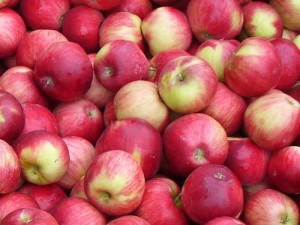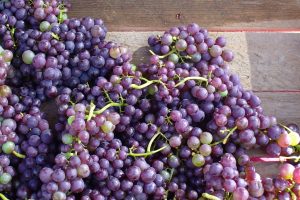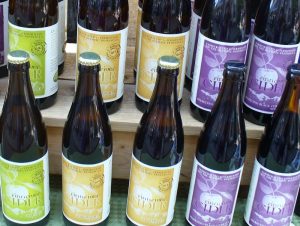 Fermenting is one of the oldest and simplest forms of food preservation. No one invented it. As sure as the sun sets every evening, fruit juice left unattended will slowly ferment. Most fermentation processes are anaerobic. That is, they occur without air, in closed containers. The process produces acids that inhibit spoilage microorganisms and other components that improve texture and flavor.
Fermenting is one of the oldest and simplest forms of food preservation. No one invented it. As sure as the sun sets every evening, fruit juice left unattended will slowly ferment. Most fermentation processes are anaerobic. That is, they occur without air, in closed containers. The process produces acids that inhibit spoilage microorganisms and other components that improve texture and flavor.
Alcoholic fermentation is the breakdown of sugar by yeasts. You use alcoholic fermentation to make a number of foods, including beer, wine, and yeasted breads. In each of these products, yeast breaks down the sugar to produce alcohol and CO2. Although alcoholic fermentation produces both wine and yeasted breads, the resulting products are very different. You make alcoholic beverages by fermenting sugar with yeast.
When you put grape juice inside a closed vessel without air, the wild yeasts on grape skins convert the juice (sugars) to wine (alcohol, mostly ethanol). Country wine (made from fruits other than grapes), cider (often made from apples), and beer (made from grains and hops) are variations on this process using different ingredients. If you start with high-quality product and clean conditions, you get a better product rather than simply allowing overripe fruit to spoil.
How to ferment cider, beer, or wine
 Follow these basic steps to ferment fruit or grain to make hard cider, beer, or wine.
Follow these basic steps to ferment fruit or grain to make hard cider, beer, or wine.
- Sanitize all equipment and bottles. Clean and sanitary equipment helps control the fermentation to achieve the desired result. The basic home brewing and wine making supplies
include food-grade plastic or glass fermentation vessels, airlock for closed fermentation, hydrometer for measuring sugar content in Brix degrees, thermometer, plastic tubing for siphoning liquids from one container to another, filtering cloth such as cheesecloth or muslin, bottles with caps or corks, and capping or corking tools.
- Use tap water, unless it contains excess minerals, iron, or water softener. However, chlorine inhibits yeast, so let water stand for 24 hours to dissipate the chlorine before using it. If in doubt, use distilled water.
- Obtain fermentable material (for example, apples, grapes, or malted barley).
- Use Campden tablets for predictable results by killing any existing organisms in fresh, unpasteurized liquids before you introduce yeast. Campden tablets contain a premeasured dose of sulfites that you may use to sanitize equipment and add to wine to protect it from spoilage. Buy them from retailers who sell beer or wine-making supplies. Historically, sulfites were added by burning pure sulfur in wooden wine casks.
- Add yeast starter formulated specifically for the product you want to make (cider, wine, or beer).
- Add yeast food if needed to ensure complete fermentation.
- If there is a first fermentation, it takes place with air and reduces most of the sugar to alcohol. Beer and wine usually use two fermentation steps.
- The second, closed fermentation takes place without air, using an airlock to let CO2 escape.
- Siphon the liquid using a hose, no closer than 4 inches from bottom of the fermenting vessel. This is so you leave behind the sediment (or lees).
- Bottle and store the product at 55°F (40°F to 60°F), and age 6 to 12 months before drinking.
Cost of fermenting supplies
 The initial cost of supplies for fermenting alcohol is in the range of $50 to $150, depending on the type of beverage and the quality of the materials chosen.
The initial cost of supplies for fermenting alcohol is in the range of $50 to $150, depending on the type of beverage and the quality of the materials chosen.
- Hard cider (made by fermenting apple juice) is the easiest alcohol to make.
- Beer or wine making kits
are the easiest and least expensive way to get started making other fermented beverages. The kits start at under $50. While these kits make unsophisticated beverages, it’s a good introduction to alcohol fermentation at a nominal cost.
For more information about fermenting foods and many other food preservation methods and recipes, get the book The Home Preserving Bible by Carole Cancler, available from booksellers everywhere.




